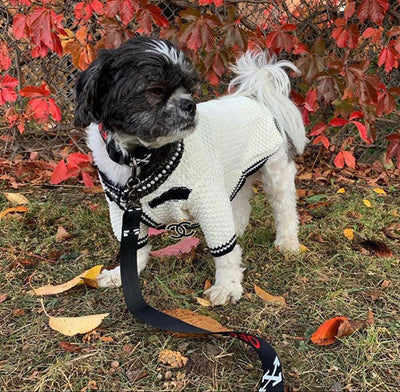It’s true that dogs are carnivores, choosing healthy food for your dog may seem like an overwhelming task. But there’s no reason that they can’t benefit from some of the same healthy eating habits as their owners.
There are so many brands and types of dog food available in the market today that it can be difficult to choose the right one, especially if you don’t know what to look out for. And while they all promise to provide your pet with all the vitamins and nutrients he needs, not all of them deliver on their promises.
This ultimate guide to choosing healthy food for your dog will show you how to make the best possible choices so that your beloved pet will stay happy and healthy throughout his or her lifetime.
Grains

As with humans, grains can be an important part of a healthy diet. They're high in fiber and make great treats. They can also be less expensive than some other ingredients and easier to store as well. They include rice, wheat (both red and white), barley, oats, millet, corn, popcorn and quinoa. If you've got a dog with allergies or food sensitivities, you might want to look into homemade grain-free recipes instead of buying commercially prepared foods.
Either way, remember that any time your dog eats grains it's a good idea to accompany them with another source of protein or fat; your dog needs both those nutrients (grains are full of carbohydrates) in order for its body to fully digest them.
Dairy

Dogs shouldn’t drink milk, but that doesn’t mean they can’t eat cheese. Dogs have digestive systems very similar to humans, so many kinds of cheese are safe for dogs in small doses.
Onions: Dogs have sensitive digestive systems and onions can be harmful because of their high sulfur content. Sulfur prevents blood from clotting and damages red blood cells. Also, onions are often treated with pesticides, which is something you want to avoid with your pet.
Salt: Just like humans, salt is an important mineral in maintaining overall health.
However, too much sodium causes dehydration in dogs just as it does in people - a dangerous condition when playing outside during hot weather or exercising excessively.
Fruits and Vegetables

It’s important that your dog’s diet includes plenty of fruits and vegetables. Fruits and veggies provide a range of nutrients, including vitamins A, C, and E, as well as iron and calcium. They also have antioxidants like beta-carotene that can help protect against disease.
Apples are particularly healthy for dogs—they contain a lot of water (which can be good for combating constipation) as well as malic acid, which can help with digestion. Greens such as broccoli or kale will also ensure your dog is getting their daily dose of nutrients!
Meat

Choose lean cuts of meat from your dog’s natural prey, like rabbit or chicken. As a general rule, skinless white meat is preferable, as dark meat tends to be higher in fat. Some meats (lamb and venison) also have more carbohydrates than others; check your dog food ingredients list and choose a recipe accordingly. With that said, it’s ok if you give your pup fatty pieces here and there—he wouldn’t get those treats naturally either!
Most dog owners find that ground meat works best because cooking with chunks can be tricky.
Seeds and Nuts
You know you’re supposed to feed your dog a balanced diet, but what exactly does that mean?
The government doesn’t regulate pet food labels, which makes it hard to sort fact from fiction. In general, aim for 15 percent protein from meat and bones, 30 percent carbohydrates from fruits and vegetables (just make sure there are no added sugars), and no more than 50 percent fat, though some is necessary for healthy coats. And don’t forget about fiber: Dogs have a shorter digestive tract than humans do and can't eat as much at one time as us carnivores can, so be sure your pet's food contains enough bulk.
Treats

Healthier Than You Think?
To be honest, there’s a little bit of debate on whether or not you should even give your dog treats. Some say that it encourages bad behavior and unhealthy eating habits. Others swear by them.
Regardless of where you fall on that spectrum, there are a few things you should consider before feeding your pup his next treat: source, ingredients and allergen info. If it doesn’t have any of these three things, it probably isn’t safe for your dog—and could even lead to health problems like obesity and allergies later in life.
Pro Tip:- What's in my treat?
This is one of those questions you can easily answer if your bag has an ingredient list.
5 things to keep in mind when buying food for your pet
- If you can’t pronounce it, don’t feed it to your dog.
- If your dog won’t eat it, get rid of it.
- Protein-first foods are always best (aka don’t buy wet food with grains and veggies first).
- Organic ingredients matter but how they were raised matters more (fish oil comes from fish, not chickens or cows).
- High-quality ingredients = high-quality food = happy pets!

That was it for this blog. We hope you find it interesting and value-adding.
You can follow us on
Instagram: Drippetboutique
To stay updated about the trends.
Subscribe to our email listing to keep yourself updated with the upcoming blogs.
Peace Out



![How to Read Your Dog's Body Language: Uncovering the Hidden Meaning Behind Their Actions [VOL-1]](http://www.drippet.ca/cdn/shop/articles/Gradient_Style_Business_YouTube_Thumbnail010.png?v=1653599983&width=270)